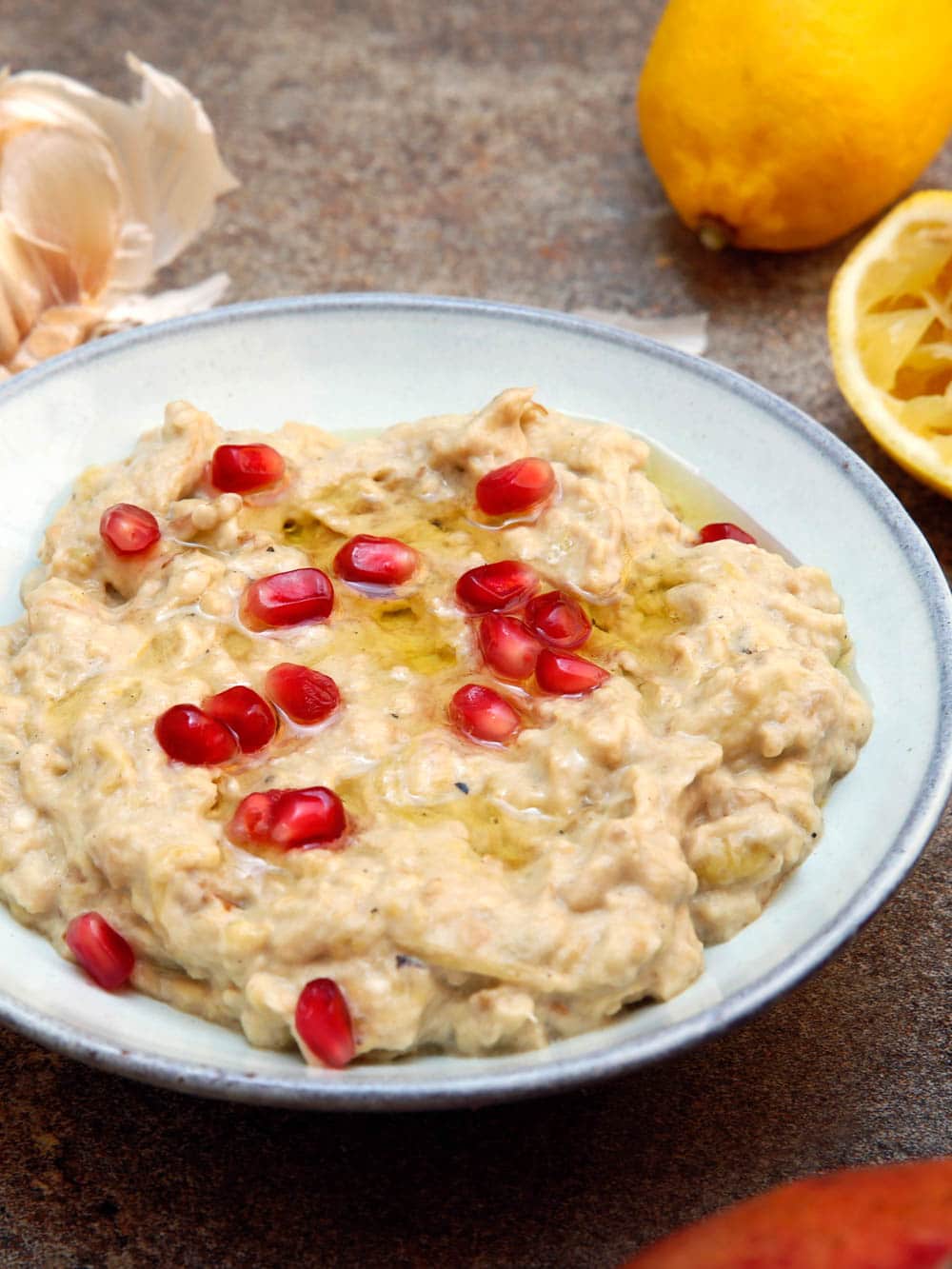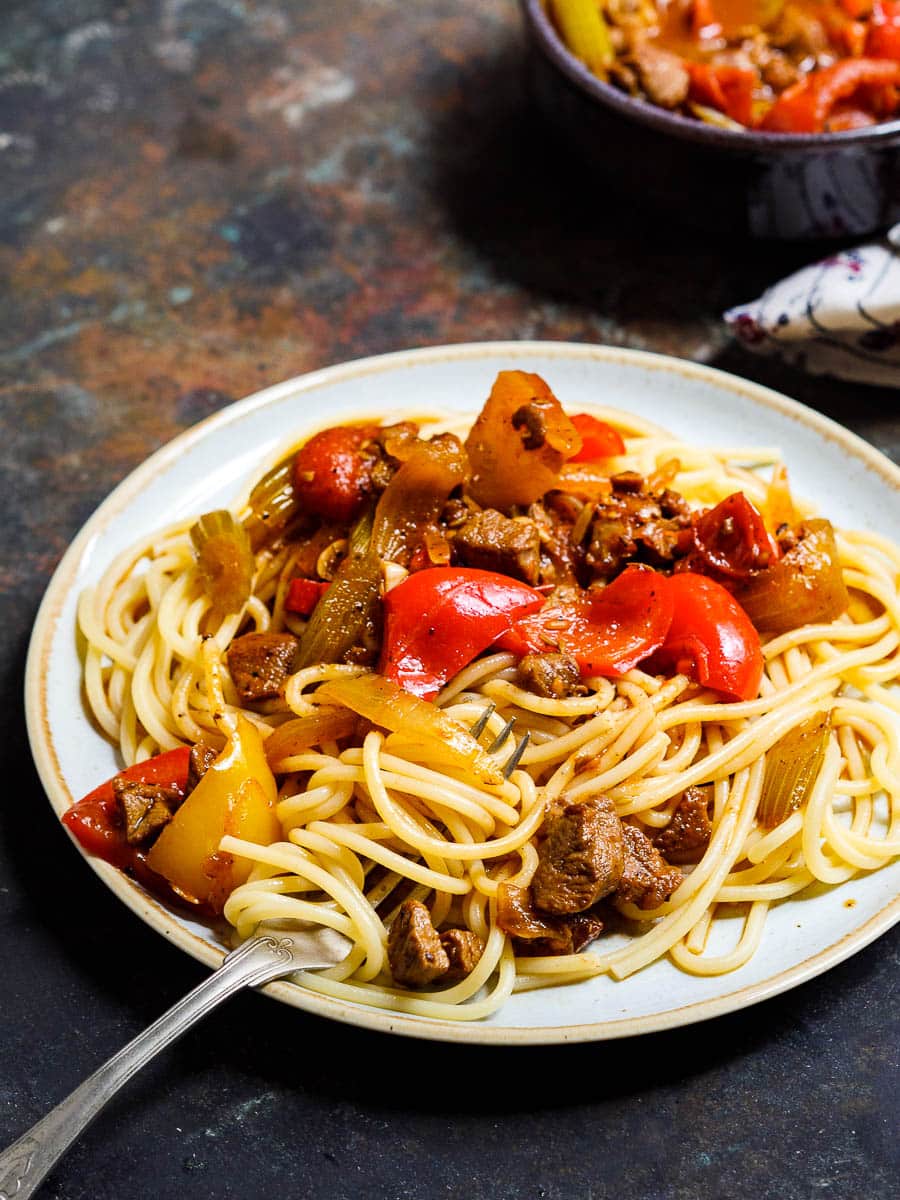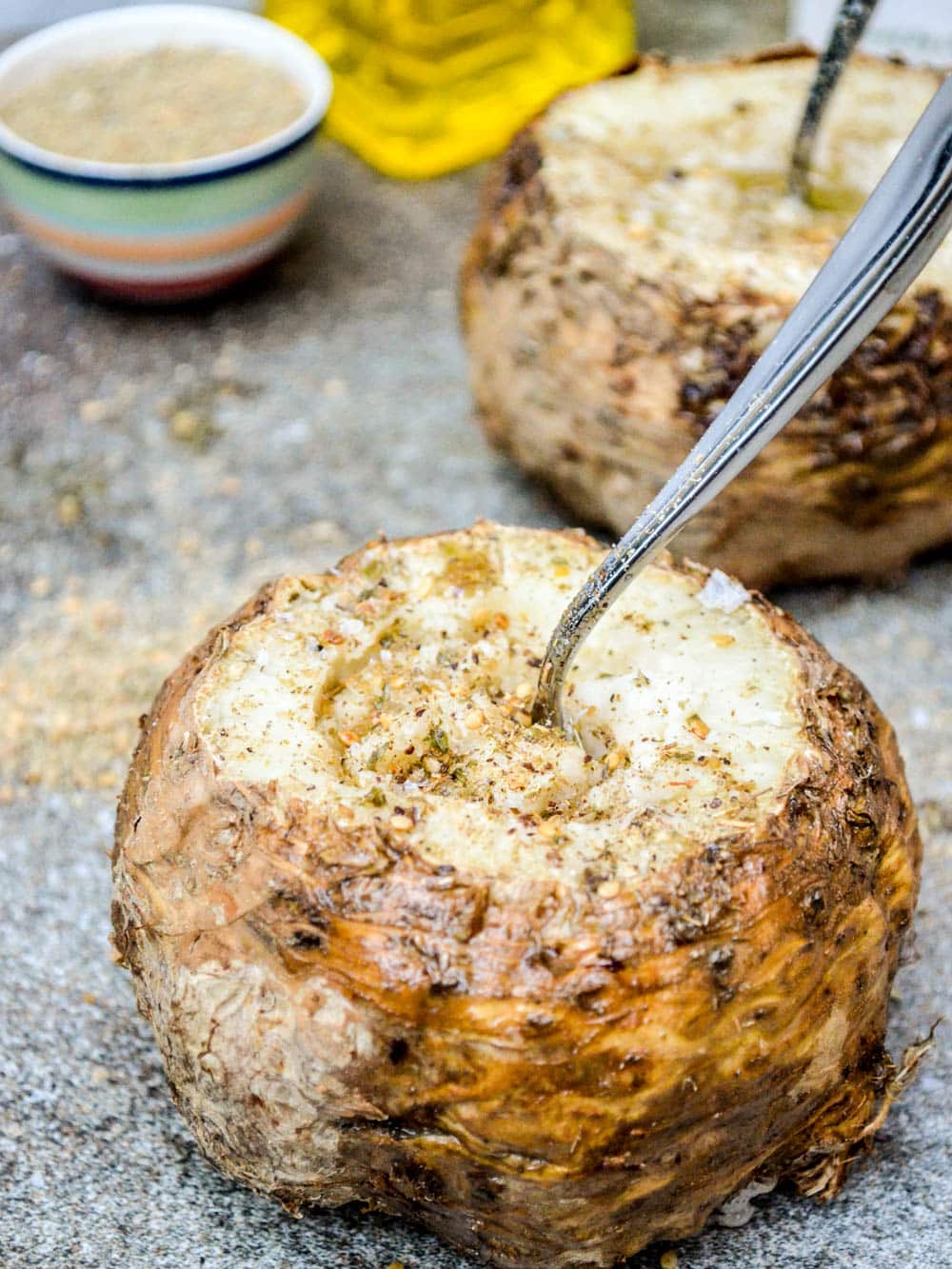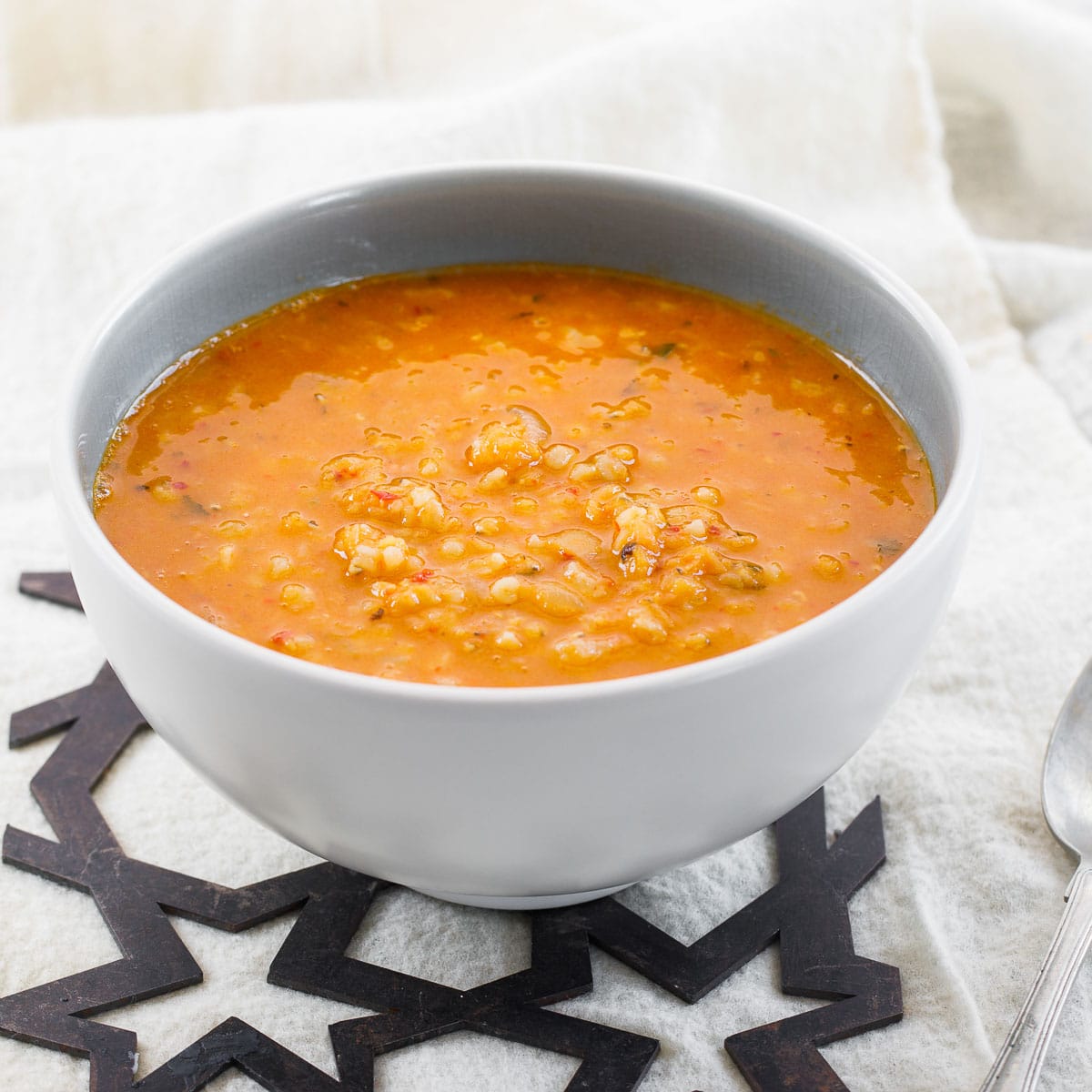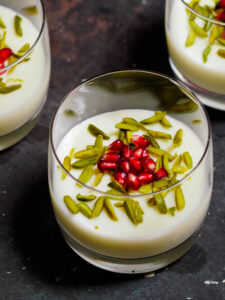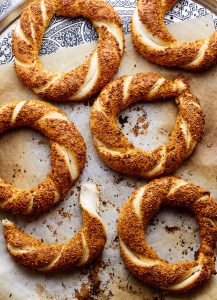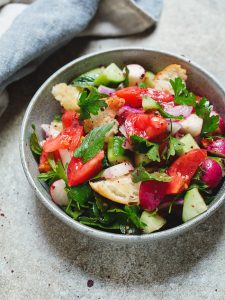
Deliciously smoky aubergine with a touch of tahini and garlic. It’s hard to imagine a decent meze spread without some version of baba ganoush or moutabal. Try this simple and classic recipe!
First things first. Baba ganoush in the West and in the Middle East, where the dish originates, are not always the same thing.
The difference between baba ganoush and moutabal
In fact, it seems a matter of great confusion. Even to people with a deep knowledge of the area’s cuisine and culinary history.
In the West, baba ganoush almost always refers to a deliciously garlicky, tahini flavoured, smoky aubergine dip. One of my favourites meze dishes. In some places in the Middle East, the name baba ganoush will fondly recall versions of the same.
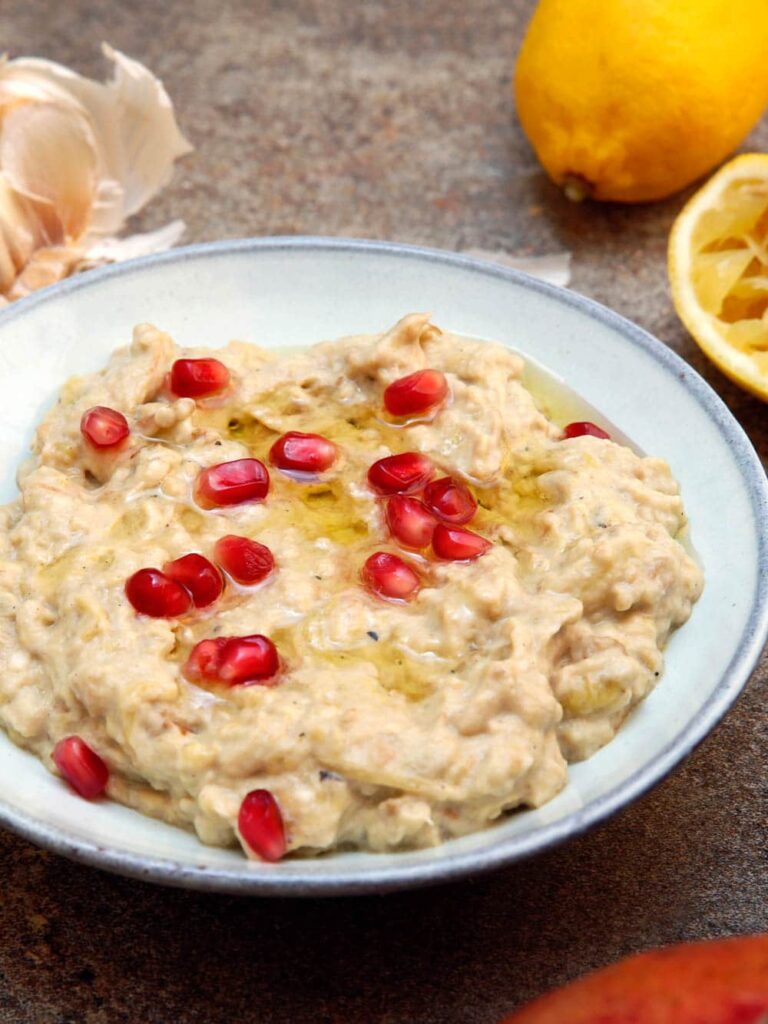
In other areas in the Middle East, however, baba ganoush is an altogether more sour affair. Pomegranate molasses and chopped vegetables take the place of tahini.
Here, the tahini and garlic flavoured version goes by the name moutabal.
Anissa Helou and Yotam Ottolenghi are but a couple who have admitted to themselves being confused. Claudia Roden, the anthropologist who’s spent decades collecting recipes from all over the Middle East, plays it safe and gives both names without any further discussion in her seminal book on Middle Eastern food.
The secret to smoky aubergine flavour
I don’t think there’s any version of smoked aubergine I don’t like. Mix it with tahini, yoghurt or pomegranate molasses – I’m game.
Traditionally, the aubergines were placed in the embers of a fire until all wrinkly and burned on the outside. You’d be forgiven to think the whole thing has turned to coal, destined for the dustbin.
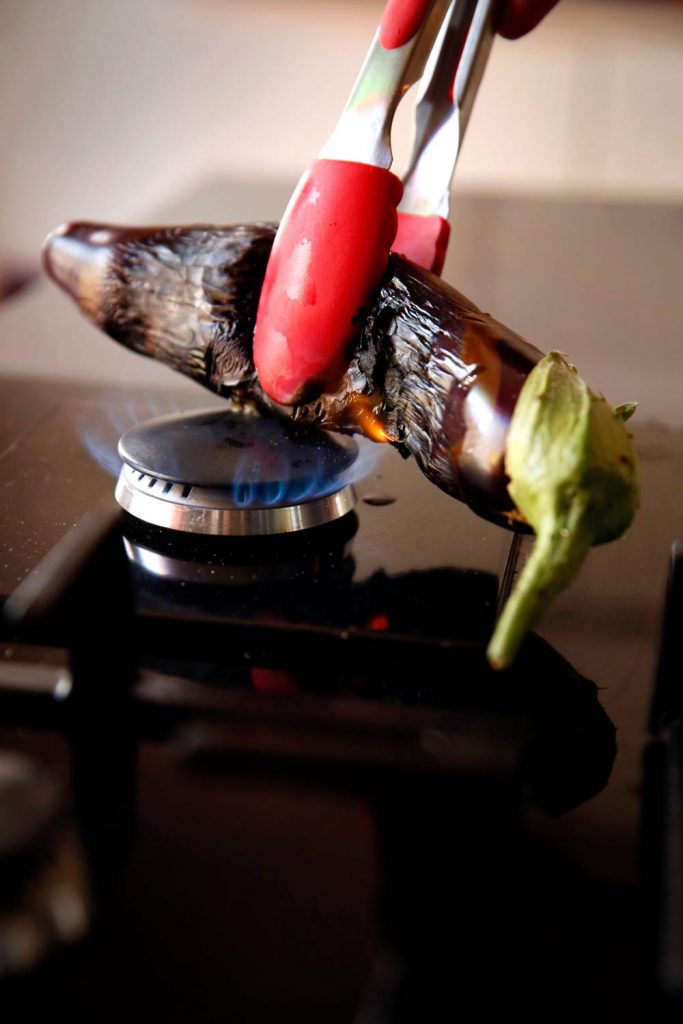
Peel off the burned skin, however, and you’ll reveal the most meltingly soft and deliciously smoky aubergine flesh.
Today, the most common way of achieving this is to leave the aubergine directly on the flame of a gas hob, turning occasionally until completely burned and blackened.
Only then will you get the smoky flavours permeating the flesh of the aubergine.
Just make sure you turn up the fan and open the windows before you start. It should hardly be a surprise to hear that getting a smoky flavour involves a bit of smoke…
Alternative ways of cooking aubergine for baba ganoush
Don’t have a gas hob? A gas barbecue will do the same trick. You may have a remove a couple of layers of racks to get directly to the flame, but I’ve had good results with this method.
Some people who don’t have a gas hob use a grill pan instead. By placing the aubergine directly in a super hot grill pan, they claim to get fairly good results. I’ve never tried it, though, so don’t take my word for it.
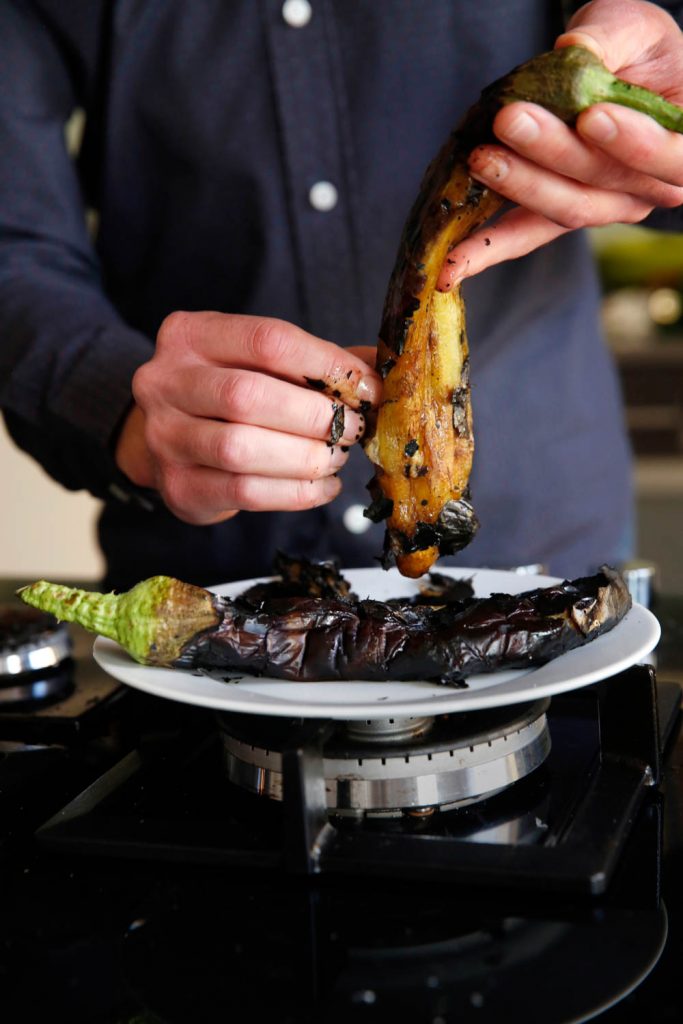
Many recipes recommend roasting the aubergines, or placing them under the broiler.
I don’t. In my experience, it doesn’t even come close to the real thing.
That said, if an oven is your only option, know that you’ll still get creamy and delicious aubergine flesh. But you’ll be hard pressed to get any of the smoky flavour that is quintessential for a good baba ganoush or moutabal. Even right under the broiler.
Which aubergines to use
Aubergines come in a seemingly endless number of variations. Black, purple speckled, even white. Long and thin, short and chubby, curved or straight.
In the Middle East, the thick, almost circular, variety is most commonly used for making baba ganoush. However, any aubergine you have will likely yield excellent results.
But do look for a thicker variety if you can. These take longer to cook. That means more time for the smoke to penetrate the flesh.
How to serve moutabal
Baba ganoush/Moutabal is a meze dish, and is best served as such. Alongside a number of other small plates of simple dishes, with some bread to mop it all up. And lots of friends around the table.
That said, it is also a brilliant side dish to any grilled or barbecued meat. Personally, I find it goes particularly well with lamb.
The recipe yields a small plate, serving 4-6 alongside a few other mezes, or a couple of portions as the main side dish to a meaty meal.
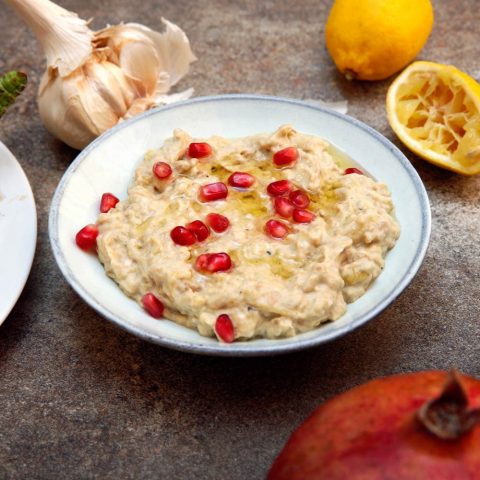
Baba ganoush (Moutabal)
Ingredients
- 2 large aubergine (eggplant), (c. 600-700 g/1½ lb) total weight
- 1 garlic clove, crushed to a paste with a generous pinch of salt
- 2 Tbsp lemon juice
- 2 Tbsp tahini
To garnish
- 2 Tbsp extra virgin olive oil
- 2 Tbsp pomegranate seeds, or 1 Tbsp chopped fresh mint
- salt
How I make it
- Prick the aubergines (eggplants) with a fork in a few places. This is to avoid the (admittedly rare) possibility of the aubergine exploding during cooking.
- Grill directly on a gas flame until completely burned and blackened throughout and soft in the middle, turning occasionally. This usually takes 10-20 minutes, depending on the size and shape of the aubergines. (See text above for other options.)
- When cool enough to handle, peel off the skin. This is sometimes easy and sometimes a fickle. Whichever it turns out to be, don’t worry if a few small pieces of burned skin remain. It’ll just add to the smoky flavour.
- Cut the aubergine flesh in a flew places, to avoid long, stringy bits. Using a fork, mash until the texture is as you like it. I prefer it slightly chunky.
- Add the remaining ingredients and some salt. Taste, and add more tahini, lemon juice or salt to taste. Serve at room temperature, garnished with extra virgin olive oil and pomegranate seeds or fresh mint, depending on what’s in season and available.


